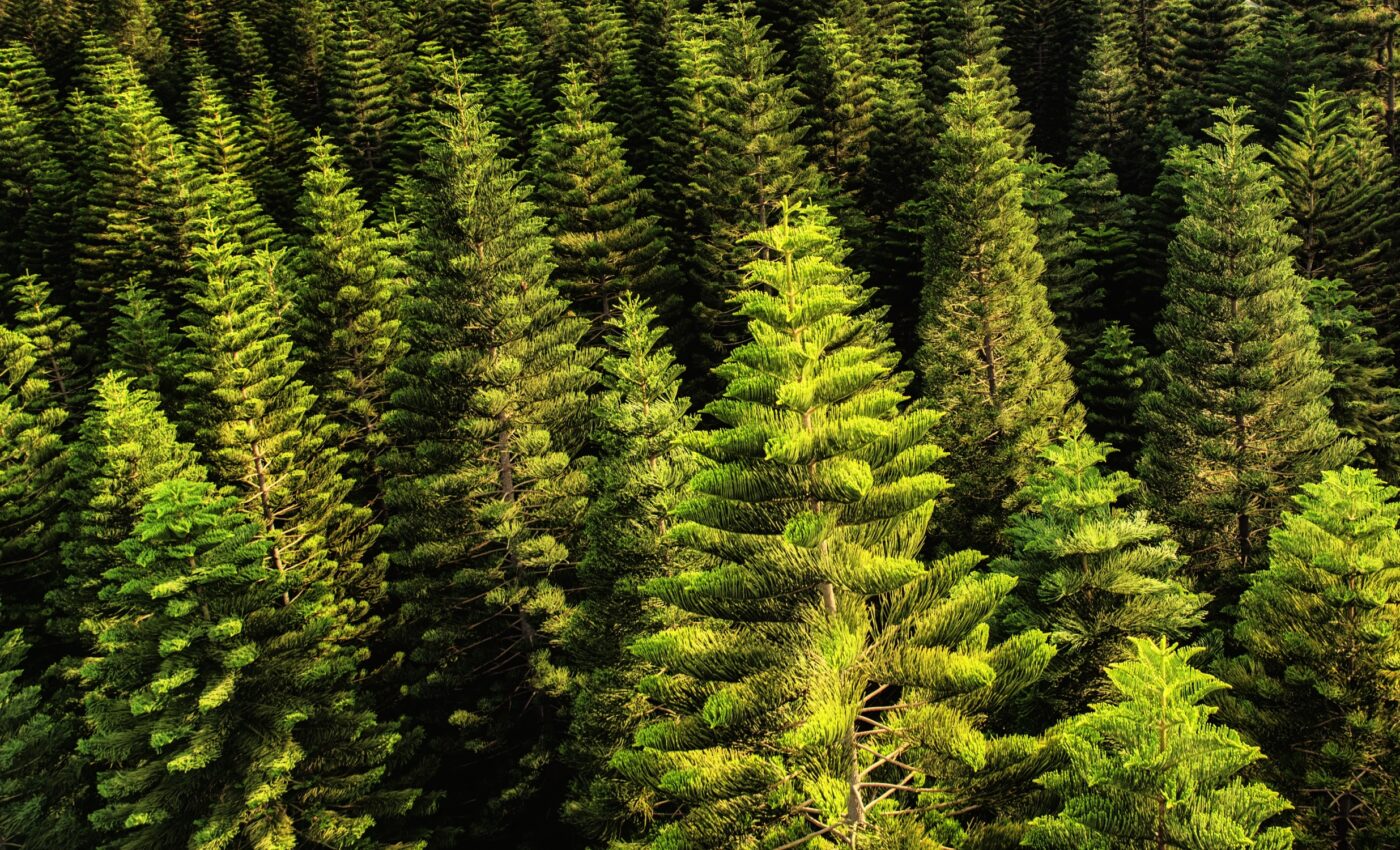
Fir trees are severely threatened by an unwelcome insect guest
Utah’s majestic mountain ranges and canyons, beloved by outdoor enthusiasts, are under siege by an unlikely adversary: a tiny, flightless insect known as the balsam woolly adelgid (BWA). Introduced from Europe a century ago, this invasive pest has been wreaking havoc on subalpine fir trees across the American West.
While barely visible to the naked eye, the BWA’s impact is anything but subtle. As it spreads through Utah’s forests, it leaves behind a trail of weakened and dying trees. The widespread damage raise concerns about the future of these critical ecosystems.
Insect with a voracious fir tree appetite
Unlike the native bark beetles that have plagued Western forests in recent years, the BWA doesn’t chew or burrow. Instead, this minuscule insect feeds by sucking out the tree’s fluids, leaving behind a toxic saliva that weakens the tree’s defenses and disrupts nutrient flow.
“It inserts its stylet, which is like a feeding tube, between the cells of the bark, and eventually finds parenchyma cells and it feeds on the fluids and starches that are contained within those parenchyma cells,” explains Justin Williams, an entomologist with the U.S. Forest Service.
The saliva injected by the BWA promotes abnormal cell growth. This leads to a characteristic swelling of branch nodes known as “gouting.” These swollen nodes are a telltale sign of BWA infestation. They can ultimately contribute to the tree’s demise.
Extent of insect damage to fir trees
A recent study from the University of Utah, conducted in partnership with the U.S. Forest Service, has shed light on the BWA’s spread and potential impact in the Uinta-Wasatch-Cache National Forest.
Researchers surveyed 58 plots across the Wasatch and Uinta mountains. They meticulously assessed the severity of BWA infestation on each subalpine fir tree.
Their findings paint a sobering picture. The study revealed that climate exposure has already damaged 41% of the subalpine fir biomass in the area.
“We took that climate-to-severity relationship along with a series of climate projections and we were able to map current and future exposure to BWA damage at a high spatial resolution. The idea [is], in 2040, 2060, 2080, and 2100, based on these different climate projections, determining how exposed these areas are to the potential damaging effects of BWA,” explains Lead author Mickey Campbell, a research assistant professor at the University of Utah.
Warming climate worsens the outlook
Unfortunately, climate change is poised to exacerbate the BWA problem. As temperatures rise, the insect’s range and potential for damage are expected to increase. This means more trees will be at risk.
Campbell’s research predicts a grim future. “And indeed, we find that for an insect that prefers warmer areas, a warming climate is going to provide it with more opportunity to cause damage,” says Campbell. This indicates a direct link between rising temperatures and increased BWA activity.
By 2100, even under moderate climate projections, a staggering 79% of the study area’s subalpine fir biomass could be exposed to BWA damage. This projection highlights the urgent need for proactive measures to protect Utah’s forests.
White fir tree resistance to tiny insect
While the BWA poses a significant threat to subalpine fir, there is a glimmer of hope. The experts found that white fir trees seem resistant to the insect’s attacks. Despite the presence of BWA, white fir shows no signs of damage.
This resistance could be a crucial factor in the forest’s ability to adapt to the BWA infestation. If white fir can thrive despite BWA, it could help maintain the forest’s biodiversity.
This resilience ensures that essential ecological functions continue. White fir’s ability to withstand BWA could play a significant role in preserving the health and diversity of these forests.
Future directions
The University of Utah research team has developed an online interactive dashboard. This tool helps land managers and the public visualize the potential spread of BWA damage in the Uinta-Wasatch-Cache National Forest.
It could be invaluable for developing targeted mitigation strategies to protect vulnerable areas. By showing current and future projections, the dashboard aids in planning and response efforts.
However, the fight against the BWA is far from over. Ongoing research and monitoring are crucial. These efforts help understand the complex interactions between this invasive pest, its host trees, and the changing climate.
Continued studies will provide essential data to inform and improve management strategies, ensuring better protection for the forests.
A call to action
Clearly, the BWA is a small insect with a big impact. Its presence in Utah is a stark reminder of the interconnectedness of our ecosystems.
Introducing non-native species can have far-reaching consequences. The BWA’s success in warmer temperatures is a sign of the growing threat of climate change.
Rising temperatures enable pests to thrive and expand their range. Addressing climate change is crucial for protecting vulnerable ecosystems. We can all play a role in conservation.
Support scientific research and contribute to conservation efforts. Stay informed about invasive species and make choices to reduce our environmental impact.
By combining scientific knowledge with individual action, we can protect Utah’s forests and other vulnerable ecosystems.
The BWA infestation is a call to action. We must prioritize the preservation of our natural world for future generations.
The study is published in the journal Forest Ecology and Management.
—–
Like what you read? Subscribe to our newsletter for engaging articles, exclusive content, and the latest updates.
Check us out on EarthSnap, a free app brought to you by Eric Ralls and Earth.com.
—–













